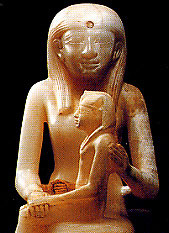Victorious Ancient Roman Politician "TRUMPET" Donated Symbolic Sundial to Middleclass Hometown Supporters
/After winning the election, Marcus Novius Tubula donated this marble sundial to his hometown.
Based on the inscription style, researchers believe it was inscribed ~50 B.C. but seems like an auspicious find, during our election month, a victory trophy of remembrance for "Tubula" or "TRUMPet" in Latin.
Another interesting note is that this honored hometown was a middle-class one. In other words, "Trumpet" won the hearts of the middle-class citizens and honored their support with a philosophically significant sundial monument, perhaps to remind them of their shared victory.
Some 2,000 years ago this politician, according to the inscription, paid for this monument and gave it to the city of Interamna Lirenas. It's ~50 miles south of Rome, established in the 4th century B.C. and left for ruin by the 6th century A.D.
This site has been excavating since 2010 and is significant because of its geopolitical situation during the Roman Empire.
Urban settlement, road network and field systems in the ancient Liri Valley (dark grey = areas over 200 m ASML)
Originally created as a Latin colony (formally independent from Rome, but bound by a close military and political alliance), the town was located at the intersection of two important communication routes: the via Latina (linking Lazio and Campania) and the course of the river Liris (linking the hinterland with the Tyrrhenian coast). Its origins lay in the Romans' military operations against the Samnites, part of their broader process of expansion across central-southern Italy (late 4th - early 3rd c. BC).
This is a concave limestone sundial with markings measuring hours of the day and for the summer and winter solstices.
Finds of sundials with inscriptions are quite rare, making this a "special find," emphasizes Alessandro Launaro, co-director the 2017 excavations with Martin Millett, Faculty of Classics at the University of Cambridge.
Inscribed in Latin on the sundial's base is "Marcus Novius Tubula," and inscriptions along the curved rim tell us that he held the office of Plebeian Tribune and graciously paid for the sundial with his own money.
Significant Sundial Symbolism
Why would a victorious politician put a sundial in his hometown? What does a sundial represent? According to the Oneirokritika of Artemidorus of Daldis, written in the 2nd century AD, which presents ways of interpreting dreams and interpretations of some of them:
“A sundial implies activities, beginnings of business, movements, projects, for those who act carefully regarding time. Thus, seeing a sundial fall or break can be dangerous and bad, especially for those who are ill."
Basically, the sundial is a symbol of time and of our limited time alive. As a symbol of time, it has also been used to encourage something be remembered. In this case of the politician, especially with the inscription giving himself credit, it's probably meant for him to be remembered by his local supporters.
"The sundial would have represented his way of celebrating his election in his own hometown," says Laurano. "People looking at it to check the time would have been reminded of Tubula's success."
Although it was found at the theater's entrance, some researchers think it was moved from the public forum. However, I think it would make good sense to put a clock with my name on it outside a theater where many people would go for entertainment. Here it may get much more attention and even more appreciation.
SOURCES:
https://news.nationalgeographic.com/2017/11/ancient-rome-election-victory-sundial-archaeology/
https://www.classics.cam.ac.uk/research/projects/interamna-lirenas
http://www.academia.edu/15103372/SYMBOLIC_MEANINGS_OF_SUNDIALS_IN_ANTIQUITY



























